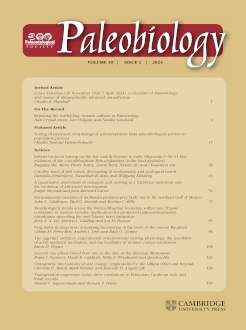Bones are living tissues and require oxygen from the blood circulation to grow, to replace damaged bone with new bone, and to carry out other functions. The amount of blood flowing into bones is related to the energy costs of these functions. It is difficult to measure blood flow rate into tissues, even in living animals, so it was thought impossible for it to be measured in extinct ones. However, blood enters the shaft of a leg bone through a hole, called a foramen, and the size of the foramen is related in turn to the size of its artery and the rate of blood flow. We can now use this surprisingly simple “foramen technique” to evaluate bone blood flow rates from fossil bones. In this study, we measured blood flow rate to the tibia (a lower hind-limb bone) of the dinosaur Maiasaura that lived more than 74 million years ago. They grew astonishingly fast, reaching 200–400 kg in their second year and reproductive adulthood in their third year and exceeding 3 metric tons before their teens. The fast growth of these hadrosaurs is associated with relatively high blood flow rates to the bones of juveniles compared with adults. Blood flow to 1 g of bone is 15 times higher in a 2 kg hatchling than in a full-grown adult, and that in a 1-year-old is 4 times higher. These differences reveal the enormous cost of building bones in the growth stages compared with the costs of maintaining them later in life.
Fossil bones were once living tissues that demanded internal blood perfusion in proportion to their metabolic requirements. Metabolic rates were primarily associated with bone growth (modeling) in the juvenile stages and with alteration and repair of existing bone affected by weight bearing and locomotion (remodeling) in later stages. This study estimates blood flow rates to the tibia shafts of the Late Cretaceous hadrosaurid Maiasaura peeblesorum, based on the size of the primary nutrient foramina in fossil bones. Foramen size quantitatively reflects arterial size and hence blood flow rate. The results showed that the bone metabolic intensity of juveniles (ca. 1 year old) was greater than fourfold higher than that of 6- to 11-year-old adults. This difference is much greater than expected from standard metabolic scaling and is interpreted as a shift from the high metabolic demands for primary bone modeling in the rapidly growing juveniles to a lower metabolic demand of adults to remodel their bones for repair of microfractures accumulated during locomotion and weight bearing. Large nutrient foramina of adults indicate a high level of cursorial locomotion characteristic of tachymetabolic endotherms. The practical value of these results is that juvenile and adult stages should be treated separately in interspecific analyses of bone perfusion in relation to body mass.






